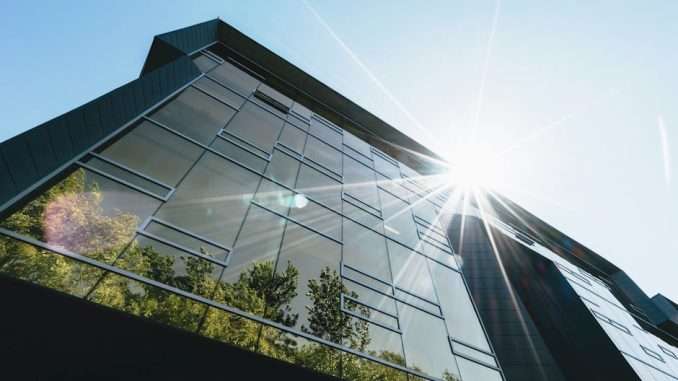
In an era where sustainability is paramount, the Building Research Establishment Environmental Assessment Method (BREEAM) has emerged as the global standard for assessing the sustainability of buildings. As the construction industry increasingly adopts eco-friendly practices, mastering the BREEAM Pre-Assessment process is crucial for any project aspiring to achieve sustainability certification. This article explores the essence, advantages, and strategic methodologies to streamline the BREEAM Pre-Assessment, ensuring projects are well-positioned for sustainable success.
BREEAM offers a comprehensive framework that evaluates a building’s design, construction, and operation against a diverse array of sustainability criteria. The Pre-Assessment phase is a preliminary but critical step in the BREEAM certification process, involving an early evaluation of a building’s sustainability performance based on predefined criteria. These criteria cover aspects such as energy efficiency, water usage, material selection, and ecological impact. Essentially, the Pre-Assessment lays the foundation for a sustainable development journey by identifying areas for improvement from the outset.
To facilitate the Pre-Assessment process, BREEAM provides a suite of tools and resources, including calculators and technical guidance. These tools simplify complex calculations and offer a clear roadmap for achieving sustainability goals. Utilising these resources allows design teams to navigate the Pre-Assessment process more efficiently, integrating sustainability measures from the project’s inception. The role of design teams and their collaborative efforts with experienced BREEAM assessors is pivotal. Such collaborations provide invaluable insights, helping identify areas for improvement early in the project. This not only optimises the sustainability performance but also enhances cost savings and operational efficiency. Equipped with the right tools and insights, design teams play a fundamental role in guiding a project towards its sustainability objectives.
BREEAM evaluates a building’s design across various sustainability measures, including energy efficiency, water consumption, waste management, and resilience to climate change. These measures are crucial for minimising carbon emissions and reducing operational costs. For public buildings and projects involving public bodies, sustainability assessment is particularly significant as it ensures that buildings meet rigorous quality assurance standards and contribute to a sustainable future. Simplifying the BREEAM Pre-Assessment process requires strategic planning and execution. One effective approach is to align the key stages of the Pre-Assessment with the project’s milestones. This alignment ensures that sustainability considerations are integrated at every stage, fostering sustainable construction practices and guiding projects towards achieving their sustainability goals. By embedding sustainability into the project’s DNA from the beginning, the Pre-Assessment process becomes more seamless and effective.
Soliciting feedback throughout the Pre-Assessment process allows for the refinement of estimations and the identification of potential improvements. This iterative approach helps fine-tune the project’s sustainability measures, ensuring alignment with BREEAM criteria and contributing to a healthier, more sustainable environment for occupants. Continuous improvement, guided by feedback, is essential for maintaining high standards of sustainability. The BREEAM Pre-Assessment not only streamlines the certification process but also sets benchmarks for environmental performance. It evaluates energy consumption and performance ratings, addresses a building’s impact on climate change and indoor air quality, and covers building materials, operations, and environmental standards. By doing so, it fosters sustainable construction practices and advances projects towards sustainable developments. The Pre-Assessment phase, therefore, plays a critical role in shaping the environmental footprint of a building project.
One of the significant benefits of BREEAM Pre-Assessment is its contribution to cost efficiency. By identifying areas for improvement early in the project, it helps in reducing operational costs and optimising resource usage. This proactive approach ensures that the project is designed and built with sustainability in mind, ultimately leading to long-term cost savings. The balance between sustainability and cost efficiency is a key driver for projects aiming to achieve BREEAM certification. BREEAM Pre-Assessment represents a crucial step towards achieving a sustainable future. It contributes to reducing a project’s carbon footprint, enhancing sustainability, and ensuring that buildings meet high environmental standards. In regions like London, where construction projects are subject to stringent sustainability requirements, BREEAM Pre-Assessment is essential for success. By aligning with these standards, projects can contribute to a greener and more sustainable urban landscape.
Engaging with experts can significantly simplify the BREEAM Pre-Assessment process. Professionals with in-depth knowledge and experience provide guidance and support to design teams, ensuring that the Pre-Assessment is conducted efficiently and aligns with sustainability goals. Their expertise helps streamline the certification process, making it more manageable and effective. Expert assistance is invaluable in navigating the complexities of BREEAM Pre-Assessment.
Simplifying BREEAM Pre-Assessment estimation is a multifaceted process that demands strategic planning, collaboration, and the use of available tools and resources. By integrating sustainable design from the project’s inception, leveraging technical guidance, and soliciting feedback, design teams can navigate the Pre-Assessment process more effectively. This approach not only enhances the sustainability performance of the project but also contributes to cost savings and a sustainable future.
The significance of the BREEAM Pre-Assessment cannot be overstated. It is an essential tool for ensuring that construction projects meet their sustainability goals. By simplifying the estimation process through strategic approaches, leveraging available tools and resources, and integrating feedback from experienced assessors, project teams can streamline their efforts towards achieving BREEAM certification. This not only contributes to a more sustainable future but also ensures that buildings are designed and constructed to the highest environmental standards. Simplifying your BREEAM Pre-Assessment estimation is not just a step towards certification; it’s a step towards a greener, more sustainable world.


Be the first to comment